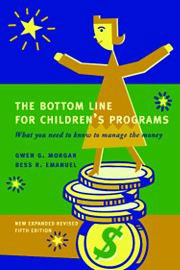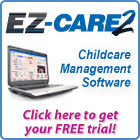ExchangeEveryDay Past Issues
 << Previous Issue
<< Previous Issue
|
View Past Issues | |
Next Issue >>
July 20, 2010
Because I had figured out how to get my seat at the table ... It was my responsibility to help others find theirs.
-Alissa Mwenelupembe, Stories of Resistance
In her recently revised handbook, The Bottom Line for Children's Programs: What You Need to Know to Manage Your Money, Gwen Morgan (and Bess Emanuel) provide some basic insights on the mechanics and politics of sliding fee scales in early childhood programs:
"Many child care programs are trying to find ways for parents to pay what they can afford, on a sliding fee scale.... The basic thing to remember is that when parents pay what they can afford, rather than the cost, somebody else has to pay the difference between what the parent can pay and the cost of the service to the center....
"Sometimes sliding fees assume that the highest fee paid by a parent is the actual cost of the service. Fees less than the full cost are like scholarship aid, helping the parents who cannot pay the full cost. Some centers call them scholarship or tuition assistance. Some not-for-profit programs have tried setting the top fee higher than the cost of service, in an effort to have the high-income parents subsidize the lower-income parents. This 'Robin Hood' kind of fee schedule is not usually acceptable to parents. The full cost of service is so great that, while there are some, very few parents would willingly pay even more to help out families with less ability to pay."
 The Bottom Line for Children's Programs: What You Need to Know to Manage Your Money by Gwen Morgan and Bess Emanuel will tell you what you need to know to manage money in a program for young children. All the dreams and aspirations we have for our schools, Head Start programs, early learning centers, and other programs for children are expressed in the budget in the language of money.
The Bottom Line for Children's Programs: What You Need to Know to Manage Your Money by Gwen Morgan and Bess Emanuel will tell you what you need to know to manage money in a program for young children. All the dreams and aspirations we have for our schools, Head Start programs, early learning centers, and other programs for children are expressed in the budget in the language of money.
Among the many topics covered are: - Making and balancing budgets
- Starting up a new program
- Staffing patterns that work
- Identifying break-even points
- Analyzing costs by function
- Predicting cash flow
- Reporting monthly and/or annually
- Using forms, worksheets, and checklists
- Tracking enrollment and attendance
- Learning from case examples
- Tax information
What is ExchangeEveryDay?
ExchangeEveryDay is the official electronic newsletter for Exchange Press. It is delivered five days a week containing news stories, success stories, solutions, trend reports, and much more.
Never enter data twice! EZ-CARE2 integrated accounting or Gold-Certified QuickBooks integration eliminates duplicate data entry. Get an info packet and demo CD!
Find everything you need, all in one place, all online.
 << Previous Issue
| View Past Issues | | Next Issue >>
<< Previous Issue
| View Past Issues | | Next Issue >>  The Bottom Line for Children's Programs: What You Need to Know to Manage Your Money by Gwen Morgan and Bess Emanuel will tell you what you need to know to manage money in a program for young children. All the dreams and aspirations we have for our schools, Head Start programs, early learning centers, and other programs for children are expressed in the budget in the language of money.
The Bottom Line for Children's Programs: What You Need to Know to Manage Your Money by Gwen Morgan and Bess Emanuel will tell you what you need to know to manage money in a program for young children. All the dreams and aspirations we have for our schools, Head Start programs, early learning centers, and other programs for children are expressed in the budget in the language of money. 
Comments (1)
Displaying 1 CommentShishu Vikash Kendra
Kolkata, West Bengal, India
I think the child learns by imitating . Help from one parent to other parent is
noble deed . It is very important to develop a nation . It is also a good habit
for a child . The charity begins at home . From the cooperation of the parent
the child learns to cooperate .
Post a Comment